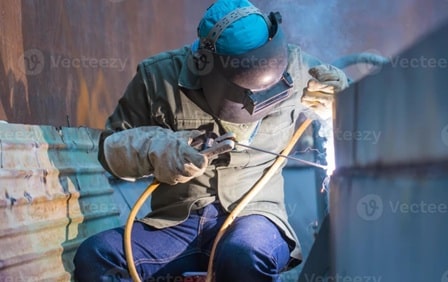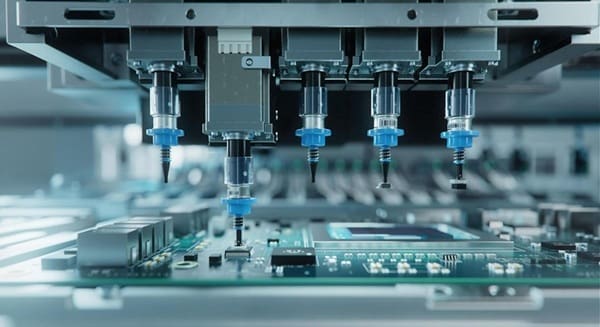Why Tanks Deserve Closer Inspection
Storage tanks are built to last, but they are not indestructible. Whether used in homes for heating oil or in industrial facilities for storing fuel or chemicals, tanks quietly endure constant pressure, temperature changes, and natural wear. Because they sit in the background, issues often go unnoticed until they become serious.
By recognizing early warning signs, homeowners and facility managers can address problems before they escalate. Timely tank repair not only extends the life of the system but also prevents costly accidents and environmental hazards.

The First Clues: Visual Red Flags
One of the easiest ways to monitor tank health is by paying attention to what you can see. Some of the most telling signs of trouble include:
- Rust and corrosion – Even minor surface rust can indicate deeper structural problems.
- Bulging or warping – Tanks that change shape under pressure are often on the verge of failure.
- Cracks or dents – Small imperfections weaken tank walls and accelerate deterioration.
- Stains or wet spots – Moisture or oily patches around the base suggest leaks or seepage.
While these may look cosmetic at first glance, they often signal deeper structural issues that require immediate repair.
Performance-Related Warnings
Not all signs of trouble are visible. Sometimes the system itself reveals problems through performance changes. If you notice any of the following, it’s time to consider repairs:
- Higher fuel consumption without changes in use.
- Unusual odors near the tank or within the facility.
- Noisy pumps or burners struggling to pull fuel.
- Slow system response, indicating clogged lines or buildup.
These performance shifts may be subtle but usually point to underlying tank issues that, if left unresolved, can disrupt operations entirely.
Why Small Problems Grow Quickly
Tanks operate under constant stress. Once damage begins, it rarely stays contained. A small patch of rust expands, a minor leak becomes a spill, and sludge inside the tank hardens into blockages that compromise connected systems.
Repairing these issues early is far less expensive than replacing an entire tank. Addressing problems quickly also prevents secondary damage to pumps, burners, or pipelines, which rely on clean, efficient tanks.
The Human and Environmental Impact
Tank problems don’t just affect machinery. Leaks and fumes can create unsafe environments for workers and residents. Fuel odors may indicate vapors that irritate the lungs, while slick surfaces near leaking tanks can lead to accidents.
From an environmental standpoint, even small leaks can contaminate soil and groundwater. Cleanup efforts are expensive and often subject to regulatory oversight. Timely tank repair is one of the most effective ways to protect both people and the environment from unnecessary harm.
Professional Repair vs. Quick Fixes
Some owners may attempt temporary fixes like patching leaks or painting over rust. While these can mask problems in the short term, they rarely address the underlying issue.
Professional repair services, on the other hand, provide:
- Thorough inspections to identify root causes.
- Specialized techniques for sealing, welding, or replacing damaged sections.
- Compliance assurance with safety and environmental regulations.
- Documentation that proves maintenance efforts for regulators or insurers.
This level of expertise ensures that repairs are lasting, safe, and cost-effective.
When Repair Isn’t Enough
There comes a point when repair is no longer the best option. Tanks that are too old, too damaged, or structurally unsound may need replacement. Professionals can help determine when a tank is past repair and guide owners toward safe removal and replacement options.
Trying to stretch a failing tank too far is often more expensive—and dangerous—than making the switch at the right time.
How to Stay Ahead of Problems
The best way to avoid costly surprises is through regular inspections and maintenance. Building a proactive routine helps identify issues early, keeping tanks in service longer and ensuring safer operations. Best practices include:
- Scheduling annual inspections by professionals.
- Monitoring fuel usage for unexplained increases.
- Checking for visible wear during routine walkthroughs.
- Keeping detailed maintenance records for accountability.
These simple steps create peace of mind and reduce the likelihood of emergencies.
Why Repair Is an Investment
Some owners hesitate at the cost of tank repair, but the reality is that repair saves money in the long run. The expense of fixing corrosion or sealing a leak is far lower than replacing a full system or paying for environmental remediation.
When viewed as an investment in safety, reliability, and financial stability, timely repairs make clear sense.
A Safer Future With Proactive Care
Tanks are among the most valuable yet overlooked assets in any facility or home. Paying attention to the small signs of trouble ensures they remain safe, efficient, and reliable. By treating tank repair as preventive care rather than crisis response, owners safeguard not only their equipment but also the people and communities around them.

